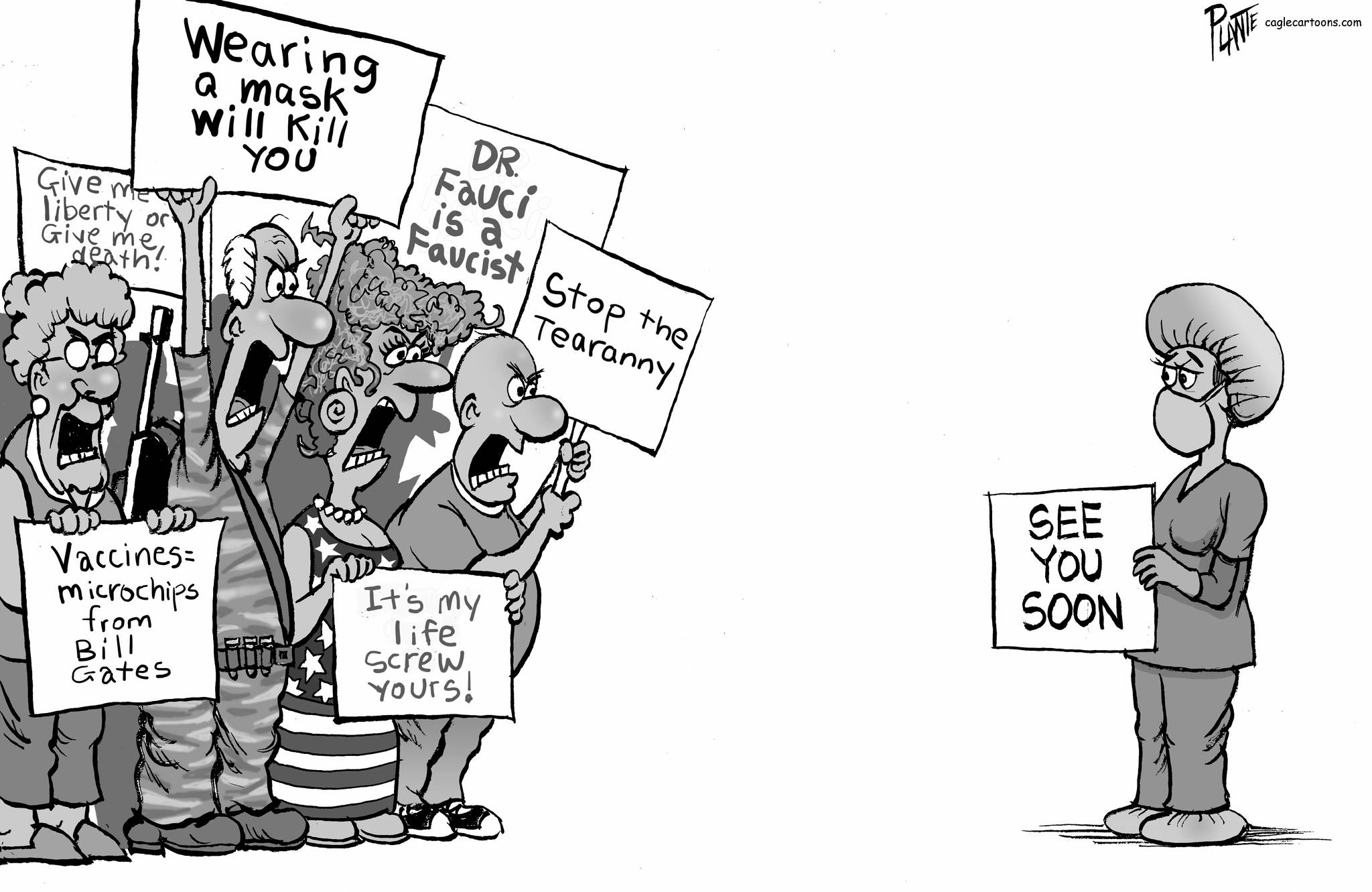Since Gov. Kate Brown lifted COVID-19 restrictions on June 30, four Multnomah County residents have died from COVID-19 as of Aug. 13. Even with the Delta variant circulating and cases on the rise, only 11 people in Oregon’s most populous county were admitted to the hospital during the week of Aug. 1. Notably, about 76% of Multnomah adults are vaccinated for COVID-19, one of the highest percentages in the state.
In contrast, Jackson County, which is less than one-third the size of Multnomah, reported that 18 of its residents died from COVID since the June 30 reopening – a higher death toll than any other county in the state, according to data from Oregon Health Authority news releases.
The surge in cases has sent so many residents from Jackson and neighboring Josephine County to area hospitals that hospitals are canceling surgeries and treating patients in hallways. The two counties are now seeking the state’s help in setting up a temporary field hospital and sending health care workers to handle the crush of patients.
And unlike Multnomah County, only 57% of adults in the Southern Oregon county have received at least one dose of the vaccine.
This is more than a tale of two counties — these alternate COVID realities are playing out across the state. Since June 30, there’s been one COVID-related death in Washington County, where 77% of adults are vaccinated — the highest in the state. In Douglas County, there have been 16 such deaths, where only 48% are vaccinated. Washington County is more than five times the size of Douglas County by population. Tiny Union County has reported five deaths in August alone, including that of a 19-year-old woman.
Deaths provide only a tiny snapshot of what is happening. But such information shows the life-and-death differences that widespread vaccinations make in a community, as those who have not been immunized account for the vast majority of cases, hospitalizations and deaths, health authority data show. It’s also the kind of startling information that should motivate a local community’s leaders to take action to protect their residents from these largely preventable deaths and hospitalizations. Unfortunately, for Jackson County residents — and those in other counties driving this surge — their commissioners have largely sat on the sidelines as the tragedies in their communities have multiplied.
With hospitals at or nearing capacity, Brown had little choice but to step in, announcing earlier this month a statewide indoor mask mandate and a requirement for executive branch employees to be vaccinated. But it remains to be seen how effective any of this will be if local officials across the state don’t champion the push for vaccines in their own communities.
In dropping most statewide restrictions on June 30, Brown handed counties the control they had long called for. It was the right move, despite second-guessing by those who believe she should have kept mandates in place. The governor’s deep unpopularity in some circles makes her a poor ambassador for vaccines or mask requirements.
But the message takes a different turn when it’s delivered emphatically and repeatedly by the familiar faces of those who live, work and represent the community. County commissioners, legislative representatives and local leaders have credibility with their constituents as well as a responsibility to protect them.
Unfortunately, many leaders seem more focused on the dissension that such requirements cause rather than the consequences of allowing COVID-19 to run unchecked in their communities. Jackson County commissioners Rick Dyer, Colleen Roberts and Dave Dotterrer did not return messages from The Oregonian/OregonLive Editorial Board seeking comment about their approach as COVID hospitalizations and deaths of their community members surged.
But just three months ago, the commission issued a resolution opposing mandates and restrictions, noting the county’s vaccination numbers “indicate that the local hospitals and health care system are extremely unlikely to ever become overwhelmed by COVID-19 cases in the future.”
Welcome to the future, commissioners.
Vaccines save lives — of those who are vaccinated and those who cannot yet receive them. Masks used in areas of high-transmission with low vaccination rates also help reduce the spread — a key concern as children under 12 remain ineligible for the vaccine. But both vaccines and masks require a broad community-wide commitment for those measures to work as intended. Otherwise, the virus only gets more opportunities to mutate into new, fiercer variants.
With a statewide mandate affecting high-vaccination counties and low-vaccination counties alike, Oregonians across the state need local leaders to step up their efforts to share vetted, accurate information, improve vaccination rates and encourage measures that help control the spread. Instead, some are using the mask requirement to whip up anti-Brown sentiment.
To those leaders who are using their positions of trust to harp on masks, please, stop with the rhetoric and focus on the challenge at hand. The lives of Oregonians are in the balance — and many of them live in your counties.



